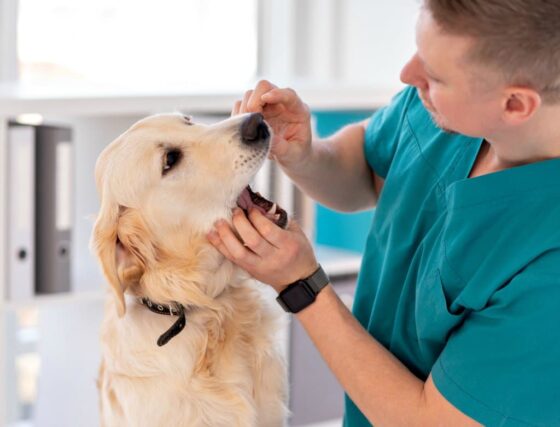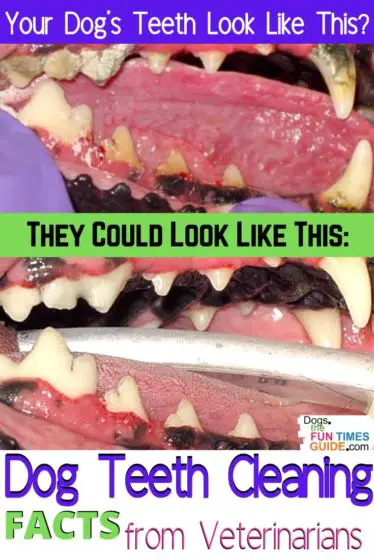Dental health is a crucial part of your dog’s health. Dog teeth cleaning will help prevent dental issues and other health problems.
It can be done at home — but at some point, your dog will probably need a teeth cleaning from a veterinarian.
If you’re thinking of getting your dog’s teeth professionally cleaned by a veterinarian, then you probably have one or more of the following questions:
- How much does dog teeth cleaning cost?
- Do dogs really need a professional dental cleaning?
- What can you expect after your dog’s teeth cleaning?
- How do I know if I should get my dog’s teeth cleaned?
I’ve been fortunate to work with ThePets team of veterinarians — so I went straight to the source and chatted with our veterinarians who specialize in dog dental procedures.
Here is everything you want to know about how professional dog dental cleaning works from a veterinarian’s perspective…
How Much Does Dog Dental Cleaning Cost?
In general, a healthy and young dog teeth cleaning process will cost between $100 and $300.

Various factors can influence the cost — including:
- age of dog
- size of dog
- geographic location of veterinary office
- pre-dental bloodwork
- dental x-rays
- IV fluids required
- extractions (if necessary)
- aftercare and medication
- anesthesia
An anesthesia-free dog teeth cleaning does not require any extra time, and your pet is free to go home immediately after the procedure ends.
However, some dogs are extra-nervous and require sedation before having their teeth cleaned. The cost of anesthesia-based dog dental cleaning ranges from $500 to $1,000.
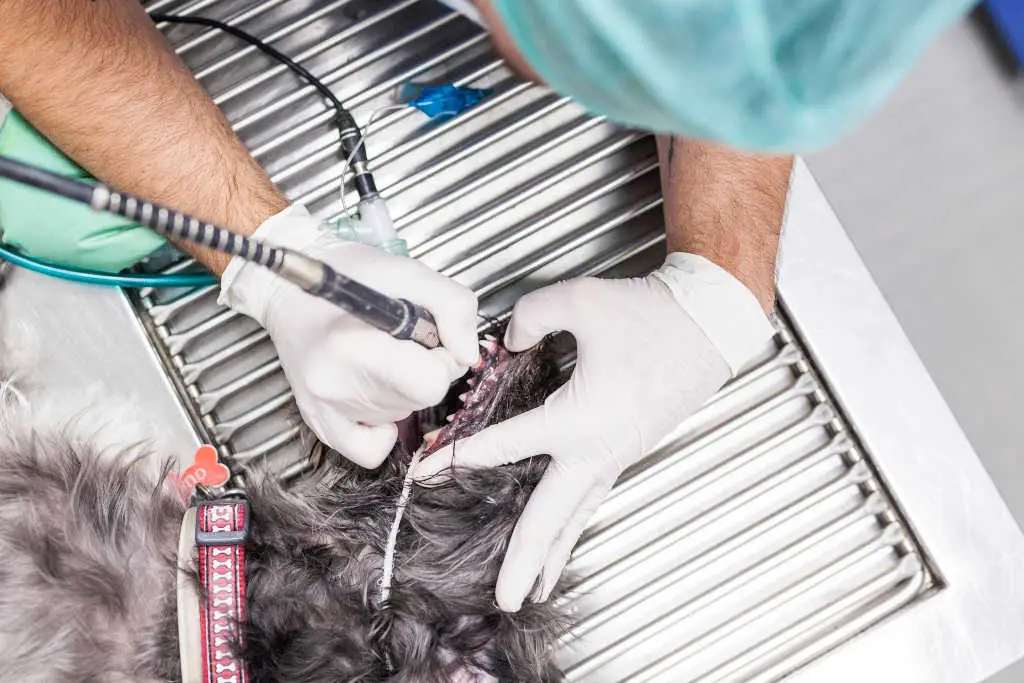
What’s the difference between an anesthesia-free dog dental cleaning and a dog teeth cleaning with anesthesia?
If you’ve ever been to the dentist yourself for a routine dental cleaning, then you know exactly what an anesthesia-free teeth cleaning is like.
Specifically, only the visible tartar above the gum line is removed. If there is any plaque and tartar below the gum line, it will continue to get worse.
Keep in mind, an anesthesia-free dog teeth cleaning should only be done when there is not a significant amount of plaque buildup on your dog’s teeth.
What You Can Expect After Your Dog’s Teeth Cleaning

After the teeth cleaning process, most dogs can go home — with routine precautionary measures.
Here’s everything that is included in a dog dental cleaning procedure.
I will attempt to address the 4 most common post-cleaning questions here…
#1 – Will my dog’s teeth be sensitive immediately after a professional dog teeth cleaning?
Yes. Your dog’s teeth (and gums) will feel some degree of sensitivity after a dental cleaning.
This happens because the veterinarian has thoroughly cleaned your dog’s teeth and gums — exposing the underlying root of each tooth.
The root of a dog’s tooth is highly sensitive and is not covered in hard enamel. There are thousands of small channels in each tooth that are connected to the tooth’s nerve center. If any of these channels were exposed during cleaning, it would cause a temporary sensitivity to cold and heat.
The most common sign that your dog is suffering from tooth sensitivity is that they will suddenly flinch whenever the teeth come in contact with hot or cold food (or very cold water).
The sensitivity usually disappears within 2 to 4 weeks after a dog dental cleaning.
#2 – Can my dog eat regular food immediately after teeth cleaning?
Most dogs can start eating after 24 hours of the teeth cleaning process. Your vet will give you detailed instructions, based on how your dog’s dental cleaning went.
Be sure to feed only soft food to your dog (like canned food, or moistened dog kibble) for the entire week following your dog’s dental procedure.
Generally, you can give your dog a small amount of soft food and half their usual amount of water the first day after a veterinary teeth cleaning.
On the second day, you can give your dog their normal amount of food and water — again, just make sure that it is soft food.
#3 – Will my dog be acting loopy or feel pain for the rest of the day following a teeth cleaning?
If anesthesia was administered during your dog’s dental procedure, then yes — your dog will act a little bit “out of it” immediately after you bring them home.
Their mouth may also feel a bit achy for the rest of the day — from the process of removing layers of tartar from your dog’s teeth (above and below the gum line).
Depending on the dog, the condition of the dog’s teeth, and how much work was ultimately done during the cleaning, antibiotics and pain medication may be sent home — to reduce infection and alleviate pain.
#4 – Is it okay to play with my dog right away? Or should a dog remain calm immediately after teeth cleaning?
Your veterinarian will tell you the best course of action after bringing your dog home — based on how much tartar was on your dog’s teeth and how many (if any) teeth needed to be extracted.
- Some dogs need a lot of rest during the recovery period — either inside a crate or kennel, or just lounging around the house.
- Other dogs need a way to get their mind off the pain. In that case, it would be wise to involve your dog in some low-key games to distract them from the discomfort they feel.
- Still other dogs become more playful after the cleaning process.
Ultimately, you should follow your dog’s lead. If they want to play, then do so — but without a lot of running or catching. If they want to cuddle, then make your dog feel safe until their mouth feels back to normal.
NOTE: Any teeth with irreversible damage will have been extracted. But don’t worry… dogs can still eat and drink just fine with missing teeth! (Dissolvable sutures are typically used.)
Do Dogs Really Need A Professional Teeth Cleaning? If So, How Often?
Taking care of your dog’s teeth is no different than taking care of your own teeth.
If you don’t brush your teeth daily, then plaque builds up — and it will eventually cause gum disease (periodontal disease). The same is true for dogs.
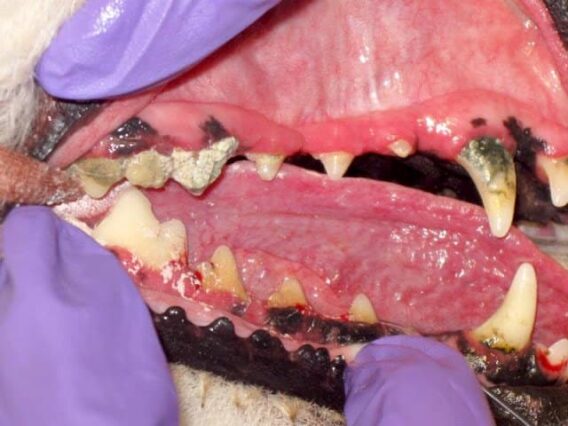
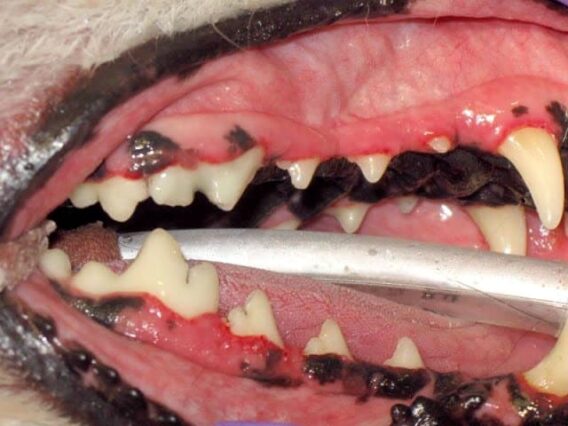
Teeth cleaning is a routine veterinary procedure. Every dog needs dental cleanings at all stages of life — usually it starts after 3 years of age.
The American Veterinary Medical Association (AVMA) reports 80% of dogs and 70% of cats have some kind of oral disease by the age of 3. It’s one of the most common problems faced by our four-legged family members.
–Hendersonville Animal Hospital
While most dog owners buy a dog tooth cleaning kit for their pet, they only clean their dog’s teeth a few times a year — and that’s not enough. Over time, tartar will start to build on your dog’s teeth and lead to gum disease.
That’s why your dog requires professional dental care from a veterinarian. Your vet will be able to assess the degree of tartar buildup and properly remove it.
See how a professional dog teeth cleaning is different from brushing your dog’s teeth at home.
How often your dog’s teeth need to be professionally cleaned depends on how rapidly the plaque builds up:
- Older dogs need dental cleanings more often than younger dogs.
- Smaller dogs need their teeth cleaned more frequently than larger dogs.
- Dogs with a poor diet need dental cleanings more often than those who eat healthy.
- Dogs that don’t get a regular teeth brushing at home, need professional teeth cleanings more often.
Wondering how to tell if you should get your dog’s teeth cleaned?
Here are some signs that it’s time to schedule a dog dental cleaning:
- Bad breath
- Yellow or brown teeth
- Broken or loose teeth
- Swollen mouth area
- Bleeding gums
- Abnormal chewing, drooling, or dropping food from the mouth
- Changes in appetite or eating habits
- Pawing at their mouth
The Bottom Line
If you want to have a healthy dog by your side, then it’s important to establish a healthy routine for your pet that begins when they’re a puppy. This includes routine teeth brushing at home and professional teeth cleanings throughout their life.
Plaque forms in as little as 6 hours after your dog’s dental cleaning. A home dental care program including regular tooth brushing is a must.
–VCA Animal Hospitals
One week after the professional dog teeth cleaning, in order to prevent tartar from starting to build up again on your dog’s teeth you’ll need to start brushing your dog’s teeth at home regularly.
Ideally, it should be done daily — just as you you brush your own teeth daily. But at the very least… weekly. This will significantly reduce the number of dog dental cleanings required in the future.
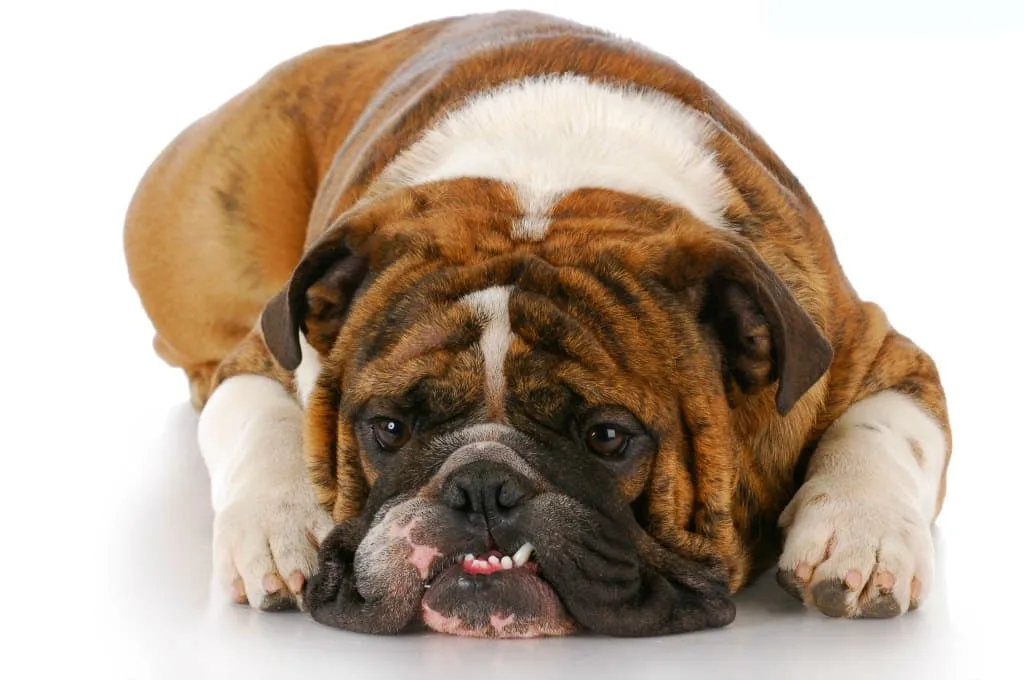
Our guest contributor Victoria Smirnova is a professional writer at ThePets. She works with certified veterinarians and enjoys helping pet owners live in harmony with their pets.
Like this post? Save it to read again later… or share with others on Pinterest!
I like to help Dog Parents find unique ways to do things that will save time & money — so I write about “outside the box” Dog Tips and Dog Hacks that most wouldn’t think of. I’m a lifelong dog owner — currently have 2 mixed breed Golden Aussies that we found abandoned on the side of the road as puppies. I’ve always trained my own dogs and help friends train theirs, as well. Professionally, I worked at a vet and have several friends who are veterinarians — whom I consult with regularly. (And just because I love animals so much, I also worked at a Zoo for awhile!) I’ve been sharing my best ideas with others by blogging full-time since 1998 (the same year that Google started… and before the days of Facebook and YouTube). My daily motivation is to help first-time dog owners be better prepared from the first day your new puppy enters your home. I like to help dog owners understand what’s ‘normal’ and what you can expect in terms of living with and training your dog — how to get through the ups & downs of potty training, chewing, teaching commands, getting your dog to listen, and everything else that takes place during that hectic first year! When I’m not training, walking, grooming, or making homemade treats for my dogs, you will find me at the corner of Good News & Fun Times as publisher of The Fun Times Guide (32 fun & helpful websites). To date, I’ve written over 600 articles for dog owners on this site! Many of them have upwards of 200K shares.

